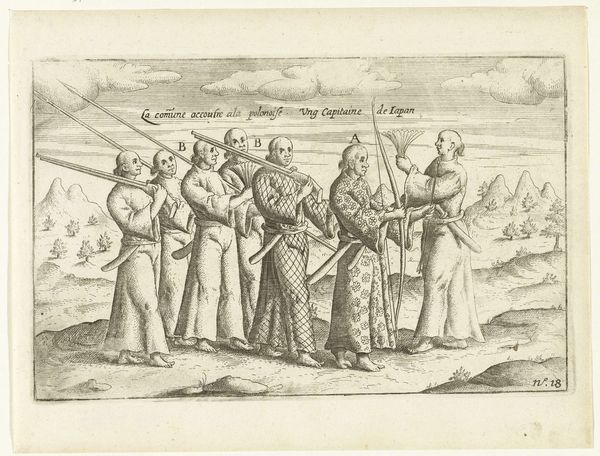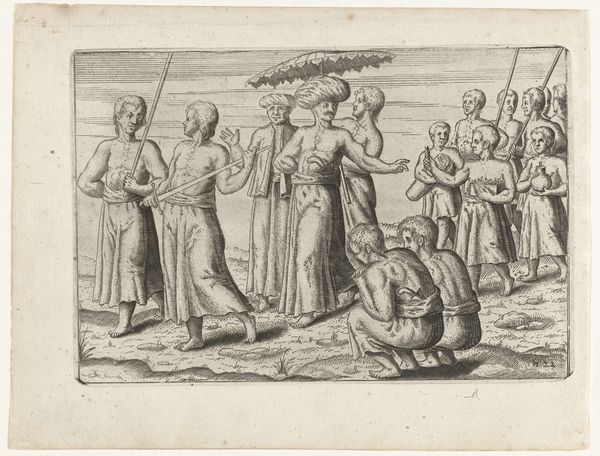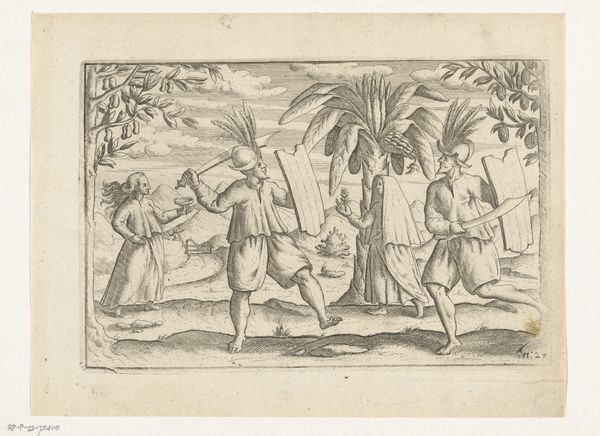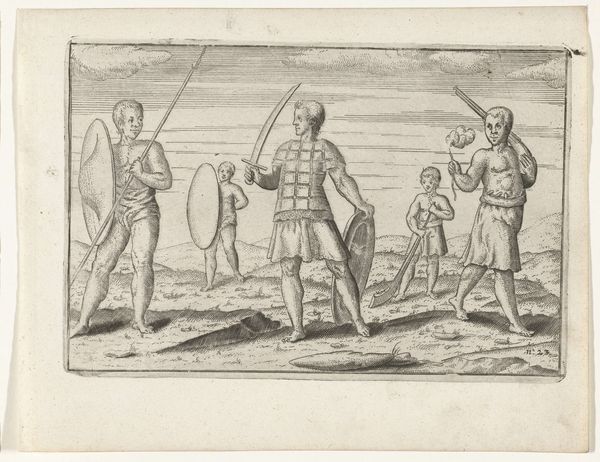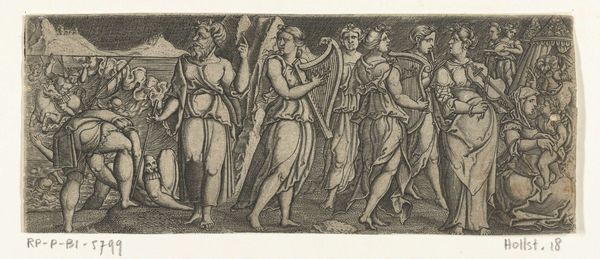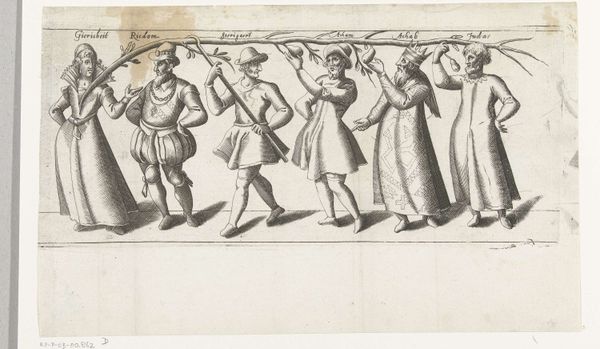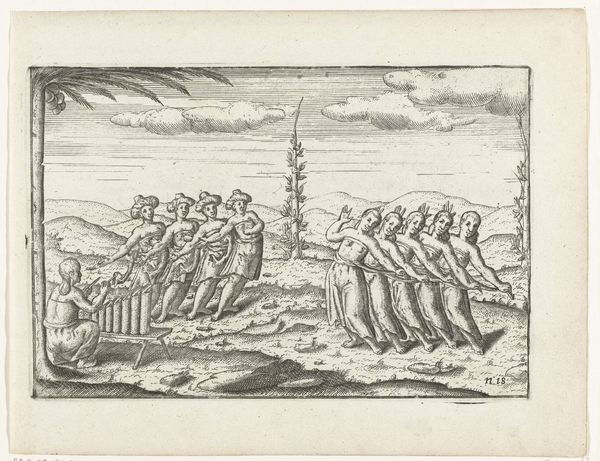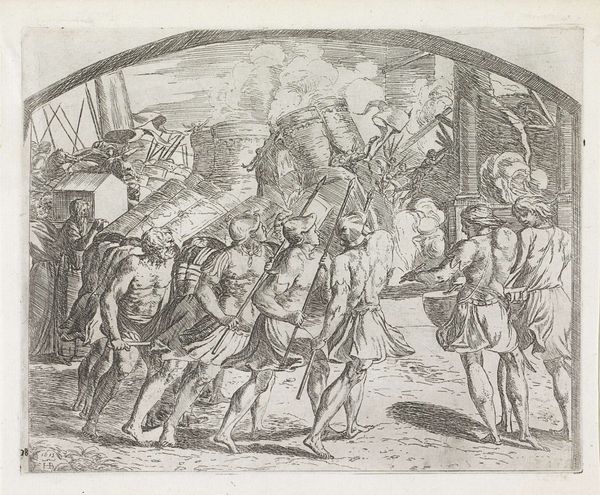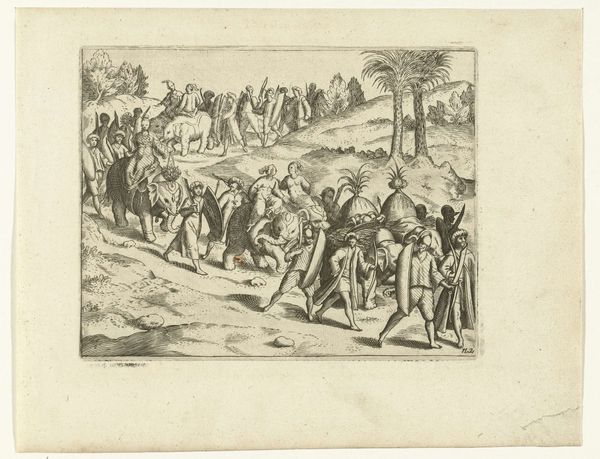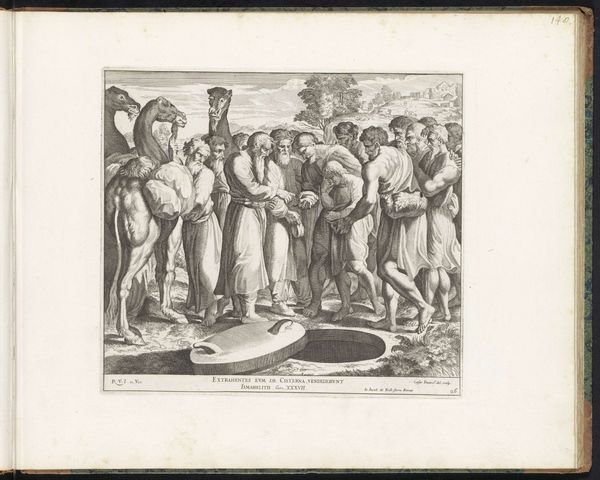
print, engraving
#
dutch-golden-age
# print
#
pen sketch
#
landscape
#
figuration
#
history-painting
#
engraving
Dimensions: height 145 mm, width 220 mm
Copyright: Rijks Museum: Open Domain
Editor: Here we have an engraving from between 1597 and 1646, titled "Dorpshoofd op Sumatra, 1596," which translates to "Village Head on Sumatra, 1596." I find it fascinating how this detailed scene of a village leader and their retinue on Sumatra is captured in such a reproducible medium. What does this work tell us about the exchange of materials and labor between cultures? Curator: Precisely. This print isn't just an image; it's evidence of the machinery of early globalization. We need to consider the labor involved in creating the printing plate, the distribution networks that carried it, and the consumption of the image itself. Who was the target audience for this piece, and what narratives about Sumatra and its people were being manufactured for consumption back in Europe? Editor: That’s a perspective I hadn’t fully considered. It's easy to get lost in the scene itself, but the material reality shifts the focus. Do you think the choice of engraving, rather than another medium, was significant? Curator: Absolutely. Engraving allowed for the mass production and dissemination of this image, embedding a particular vision of Sumatran society within a broader European consciousness. What materials are being depicted, what is their value in trade or resource extraction? The umbrella of status held above the leader points directly toward Dutch aspirations of political control. Editor: It is so interesting to consider that this is not just art, but a kind of cultural artifact, illustrating not just what was seen, but the how and why of seeing it. It reshapes the way I view this, understanding the layers of labor and resources that went into creating and consuming it. Curator: Indeed, and the inherent power dynamic that exists between colonizer and colonized represented in material form. The power to represent another culture is a resource in itself.
Comments
No comments
Be the first to comment and join the conversation on the ultimate creative platform.
